How do I choose the right handbag for me?
How do I choose the right handbag for me? Feeling lost when picking a handbag? The right handbag fits your style. It also fits your needs. Choosing the best one can be tricky.
The right handbag is not just about looks. It should fit your lifestyle. It needs to match your body. It should work for your daily needs. This guide will help you choose your perfect handbag.

Let's dive into picking the perfect bag. We will look at materials. We will also look at size and use. This will help you make a smart choice. You will find a bag that is just right.
What are the advantages and disadvantages of different handbag materials[^1] (leather[^2], PU, canvas[^3])? Have you ever wondered about handbag materials[^1]? Each material has its own pros and cons. Knowing them helps you choose. It makes sure your bag lasts and looks good.
Understanding handbag materials[^1] is very important. Leather, PU, and canvas[^3] each offer different benefits. They also have different drawbacks. Your choice depends on durability[^4], look, and cost.

I've worked with many materials in my twenty years in the bag industry. I learned a lot. I recall one time, a client wanted a very specific feel for their bags. They were new to the industry. They loved the look of real leather[^2]. But they had a limited budget. I explained the pros and cons of PU leather[^5]r](https://www.tradeuno.com/blogs/news/leather-vs-fabric-handbags-pros-and-cons-for-everyday-use)[^2]. It was a good alternative for them. They could get the look they wanted. They could also stay within budget. It showed me how important it is to guide clients on materials.
Here is a breakdown of common handbag materials[^1]:
Leather: What are its good and bad points? Leather is a natural material. It comes from animal hides. Advantages:
Durability and Longevity: Real leather[^2] bags last a long time. They can last for decades. They get better with age. They develop a unique look called a patina. Aesthetics: Leather looks classic. It feels luxurious. It comes in many finishes. Its natural grain is beautiful. Feel: Leather is soft and pliable. It is comfortable to touch. Water Resistance: Good quality leather[^2] has some natural water resistance. Breathability: Leather breathes. This helps prevent moisture build-up inside the bag. Disadvantages: Cost: Leather is expensive. It is one of the priciest materials. Maintenance: Leather needs care. It needs conditioning. It can stain. It can get scratches. Weight: Leather bags can be heavy. Especially big ones. Ethical Concerns: Some people avoid leather[^2] for ethical reasons. PU (Polyurethane) Leather: What are its good and bad points? PU leather[^5]r](https://www.tradeuno.com/blogs/news/leather-vs-fabric-handbags-pros-and-cons-for-everyday-use)[^2] is synthetic. It is also called faux leather[^2] or vegan leather[^2]. Advantages:
Cost-Effective: PU leather[^5]r](https://www.tradeuno.com/blogs/news/leather-vs-fabric-handbags-pros-and-cons-for-everyday-use)[^2] is much cheaper than real leather[^2]. This makes it popular. Versatility: It comes in many colors. It can mimic various textures. It can look like real leather[^2]. Water Resistance: PU leather[^5]r](https://www.tradeuno.com/blogs/news/leather-vs-fabric-handbags-pros-and-cons-for-everyday-use)[^2] is highly water-resistant. It is easy to clean spills. Low Maintenance: It does not need conditioning like real leather[^2]. Just wipe it clean. Ethical/Vegan Choice: It is a good choice for those who avoid animal products. Disadvantages: Durability: PU leather[^5]r](https://www.tradeuno.com/blogs/news/leather-vs-fabric-handbags-pros-and-cons-for-everyday-use)[^2] is not as durable as real leather[^2]. It can crack or peel over time. It wears out faster. Breathability: It does not breathe well. It can feel sticky. Aesthetics: It might not look as rich as real leather[^2]. It lacks the natural patina. Environmental Impact: Its production can involve chemicals. It is not biodegradable. Canvas: What are its good and bad points? Canvas is a durable plain-woven fabric. It is made from cotton or linen. Advantages:
Lightweight: Canvas bags are light. This makes them easy to carry. Durability: Canvas is very strong. It resists tearing. It resists stretching. Eco-Friendly: Cotton canvas[^3] is often more eco-friendly. It is biodegradable. Cost-Effective: Canvas bags are usually affordable. Easy to Clean: Most canvas[^3] bags can be washed. They are easy to maintain. Casual Style: Canvas has a relaxed, casual look. It is often used for tote bags or backpacks. Disadvantages: Water Absorption: Untreated canvas[^3] absorbs water easily. It can get wet. Staining: It can stain easily. Especially light-colored canvas[^3]. Formality: Canvas is not suitable for formal settings. It looks too casual. Protection: It offers less padding or protection for contents. Material Durability Appearance Maintenance Cost Ethical Choice Key Differentiator Leather Very High Luxurious High High No Ages beautifully PU Moderate Versatile Low Low Yes Budget-friendly Canvas High Casual Low Low Yes (Cotton) Lightweight, washable At Lilalila, we offer bags in all these materials. Our fabric workshop ensures high-quality canvas[^3]. Our PU leather[^5]r](https://www.tradeuno.com/blogs/news/leather-vs-fabric-handbags-pros-and-cons-for-everyday-use)[^2] bags look great. Our real leather[^2] bags are top-notch. We work with clients like Atziri and Clare, who love canvas[^3] totes. We can also provide high-end leather[^2] bags for brands like Armani. This wide range ensures we meet different needs.
How do I choose the right handbag size[^6] based on my height and body type? Do you pick bags that just don't look right on you? Your height and body shape matter. They guide you to the perfect bag size. A wrong size bag can make you look out of balance.
Choosing the right handbag size[^6] is crucial for your overall look. A bag that is too big or too small can make your proportions seem off. It needs to harmonize with your body type.

I often see people making mistakes with bag sizes. Once, I had a short vendor visit our factory. She carried a huge, slouchy bag. It seemed to swallow her. I gently suggested that a smaller, more structured bag might suit her better. She tried one of our samples. It made a remarkable difference. She looked taller and more balanced. This experience confirmed for me that bag size is really important for personal appearance[^7].
Here are guidelines based on height and body type:
For petite individuals (under 5'4" / 163 cm): Avoid: Oversized or very bulky bags. These can overwhelm your small frame. They can make you look shorter. Long shoulder straps[^8] that make the bag hang low around your hips can also shorten your appearance[^7]. Choose: Small to medium-sized bags. Structured bags work well. Mini bags, small cross-body bags, and clutch bags are good options. Bags with shorter straps[^8] are better. Top-handle bags also look good. The bag should sit higher on your body. This makes you look taller. For average height individuals (5'4" - 5'7" / 163 cm - 170 cm): Enjoy: You have more flexibility. Most medium to large-sized bags will work well for you. Totes, shoulder bags, satchels, and hobos are all good choices. Consider: Pay attention to how the bag sits on your body. A bag that ends just above or at your hip is generally flattering. You can experiment more with different styles. For tall individuals (over 5'7" / 170 cm): Avoid: Very small or tiny bags. These can look disproportionate on your taller frame. They can make your body seem bigger than it is. Choose: Medium to large-sized bags. Oversized bags can look great on you. They balance your height. Large totes, spacious shoulder bags, and chunky hobos are good options. Long shoulder straps[^8] and cross-body bags that sit lower work well. They match your longer limbs. For different body types: Slim/Straight Build: Bags with some volume or interesting shapes can add curves. Hobo bags, slouchy tote bags. Curvy/Plus Size Build: Structured bags can help create a defined silhouette. Avoid overly soft or unstructured bags. These might add bulk. Medium to large size bags that are proportional to your frame work best. Top-heavy (e.g., larger bust): Bags that sit lower on your body are better. Cross-body bags that hit at the hip. Long shoulder bags. Bottom-heavy (e.g., larger hips): Bags that sit higher, like shoulder bags that tuck under the arm, or top-handle bags, can balance your figure. They draw the eye upward. Body Trait Avoid Prefer Reason Petite Height Oversized, low-hanging Small to medium, top-handle, high-sitting Avoid overwhelming small frame Tall Height Tiny, disproportionate Medium to large, oversized Balances height Slim Build Too small, overly structured Voluminous, slouchy Adds dimension Curvy Build Overly soft, very small Structured, proportionate Creates defined silhouette I use these guidelines when teaching my team about bag design[^9]. We make sure our bags cater to a wide range of body types. This helps our clients like Jill, who customizes makeup bags, choose the right bag for their customers.
What types of handbags are suitable for daily use and formal occasions[^10]? Do you need one bag for everything? Or different bags for different events? Choosing the right bag for daily use and formal occasions[^10] is key. It helps you look appropriate for any event.
Different occasions call for different handbags. Daily use needs practicality. Formal occasions demand elegance. Knowing which styles fit where can simplify your wardrobe choices.

In my experience, many people get this wrong. They try to use one bag for everything. It rarely looks good. I remember Lily, a corporate gift procurement specialist. She always looks put together. She knows exactly what bag to use. For a client meeting, she uses a classic, structured tote. For a company gala, she carries a sleek clutch. This attention to detail always makes a good impression. It's a lesson worth learning.
Here are the types of handbags suitable for different occasions:
For Daily Use: Daily use bags need to be functional and durable. They should hold your everyday items.
Tote Bag: Very popular. They are spacious. They can hold laptops, books, and essentials. They come in various materials like canvas[^3], leather[^2], or PU. They are great for work, shopping, or school. Shoulder Bag: A classic choice. It's carried on one shoulder. It provides easy access to contents. They come in many sizes and styles. They are versatile for many casual settings. Cross-body Bag: Perfect for hands-free convenience. They are great for errands, travel, or casual outings. They come in small to medium sizes. Backpack: Ideal for students, commuters, or travelers. They distribute weight evenly. They are very practical for carrying heavier items. Hobo Bag: A slouchy, crescent-shaped bag. It is comfortable to wear. It offers a relaxed, casual look. For Formal Occasions: Formal occasions, like weddings, galas, or black-tie events, require elegant and refined bags.
Clutch: The most common formal bag. It is small and hand-held. It carries only essentials like a phone, keys, and lipstick. Clutches often have elegant embellishments. Minaudière: A small, hard-cased clutch. It is usually covered in jewels or metallic finishes. It is even more formal than a regular clutch. It is perfect for very fancy events. Wristlet: A small bag with a loop or strap to wear around the wrist. It offers a little more security than a clutch. It is good for events where you might need your hands free at times. Small Top-Handle Bag: A very elegant option. It is small and structured. It holds its shape. It adds a touch of sophistication. It is suitable for semi-formal dinners or cocktail parties. Occasion Bag Type Key Feature Example Use Daily Use Tote Bag Spacious, practical Work, grocery shopping Daily Use Cross-body Bag Hands-free Errands, casual outings Formal Use Clutch Elegant, compact Weddings, evening galas Formal Use Minaudière Ornate, very small Black-tie events At Lilalila, we make bags for all purposes. Our canvas[^3] totes are perfect for daily use. Our classic leather[^2] clutches are ideal for formal events. We ensure high-quality production for every type.
What details should a beginner pay attention to when buying a handbag? Starting to buy handbags can be overwhelming. So many choices! Knowing what to look for makes it easier. Pay attention to key details. This helps you get a good bag.
For a beginner, buying a handbag can be confusing. Focusing on key details ensures a smart purchase. This includes quality, practicality, and how it aligns with your style.

When I just started in the bag business, I made some mistakes myself. I bought bags based only on looks. They often fell apart fast. This taught me to look deeper than just the surface. What I learned, I now share with my team. We make sure our product quality guides our customers. For instance, our bags pass SGS certification. This ensures durability[^4].
Here are details a beginner should check:
- Quality of Materials: Leather: If it's real leather[^2], it should smell like leather[^2]. It should feel soft. It should have natural imperfections. Check for full-grain or top-grain designations for better quality. PU Leather: Check if it feels too plastic-like. Good PU leather[^5]r](https://www.tradeuno.com/blogs/news/leather-vs-fabric-handbags-pros-and-cons-for-everyday-use)[^2] can feel quite soft. It should not have a strong chemical smell. Canvas: It should feel thick and sturdy. Not flimsy. Look for tightly woven canvas[^3].
- Craftsmanship and Stitching: Stitching: Check the seams. They should be straight and even. There should be no loose threads. Double stitching adds strength. Edges: Edges should be neatly finished. They should not be frayed. For leather[^2] bags, painted or sealed edges should be smooth. Hardware: Zippers, buckles, and clasps should feel solid. They should not feel cheap or light. They should open and close smoothly. YKK zippers are a good sign of quality. Metal hardware is usually better than plastic.
- Functionality and Practicality: Pockets: Does the bag have enough pockets[^11]? Are they in useful places? Interior and exterior pockets[^11] help organize contents. Closure: Is the main closure secure? Zippers, magnetic snaps, or turn-locks are common. Make sure it closes properly. Straps: Are the straps[^8] comfortable? Are they adjustable? Check how they are attached to the bag. They should be reinforced. Lining: Check the interior lining[^12]. It should be durable. It should be well-sewn. It should not sag. A light-colored lining[^12] makes it easier to find items.
- Style and Versatility: Your Style: Does the bag match your general clothing style? Will you use it often? Versatility: Can it be used for more than one occasion? A neutral color or classic design is more versatile. Capacity: Does it fit what you usually carry? Don't buy a bag too small or too large for your daily needs. Detail What to Look For Why it Matters Material Feel, smell, type Durability, aesthetics, cost Stitching Straight, even, no loose threads Craftsmanship, longevity Hardware Solid, smooth operation, material Durability, ease of use Pockets Sufficient, well-placed Organization, practicality Straps Comfortable, reinforced, adjustable Comfort, durability[^4], versatility Lining Durable, well-sewn, light-colored Ease of finding items, internal protection As Anlly Liu, founder of Lilalila, I lead my team with these details in mind. Our customers, from small brands to big names like H&M, trust us. We offer OEM and ODM services. We pay attention to every detail, from fabric to finished bag. This ensures high quality for every product we ship. This is especially important for customers who need
[^1]: Understanding handbag materials helps you choose a bag that lasts and suits your style. [^2]: Leather bags are durable and luxurious, but knowing their care needs is essential for longevity. [^3]: Canvas bags are lightweight and eco-friendly, making them a practical choice for everyday use. [^4]: Knowing material durability helps you select a handbag that withstands daily wear. [^5]: PU leather offers a budget-friendly alternative to real leather with its own unique benefits. [^6]: Choosing the right size bag enhances your overall look and ensures comfort. [^7]: Understanding appearance factors helps you choose a handbag that aligns with your aesthetic. [^8]: Comfortable and adjustable straps are crucial for a handbag's usability and comfort. [^9]: Understanding bag design principles ensures you create functional and appealing handbags. [^10]: Selecting the right formal handbag elevates your outfit and makes a lasting impression. [^11]: Pockets enhance organization and accessibility, making your handbag more practical. [^12]: A well-constructed lining protects your belongings and enhances the bag's durability.

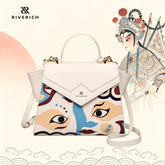

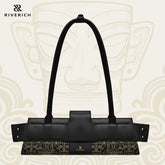

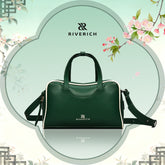

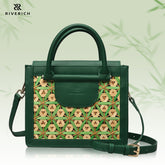

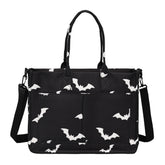

Leave a comment
All blog comments are checked prior to publishing